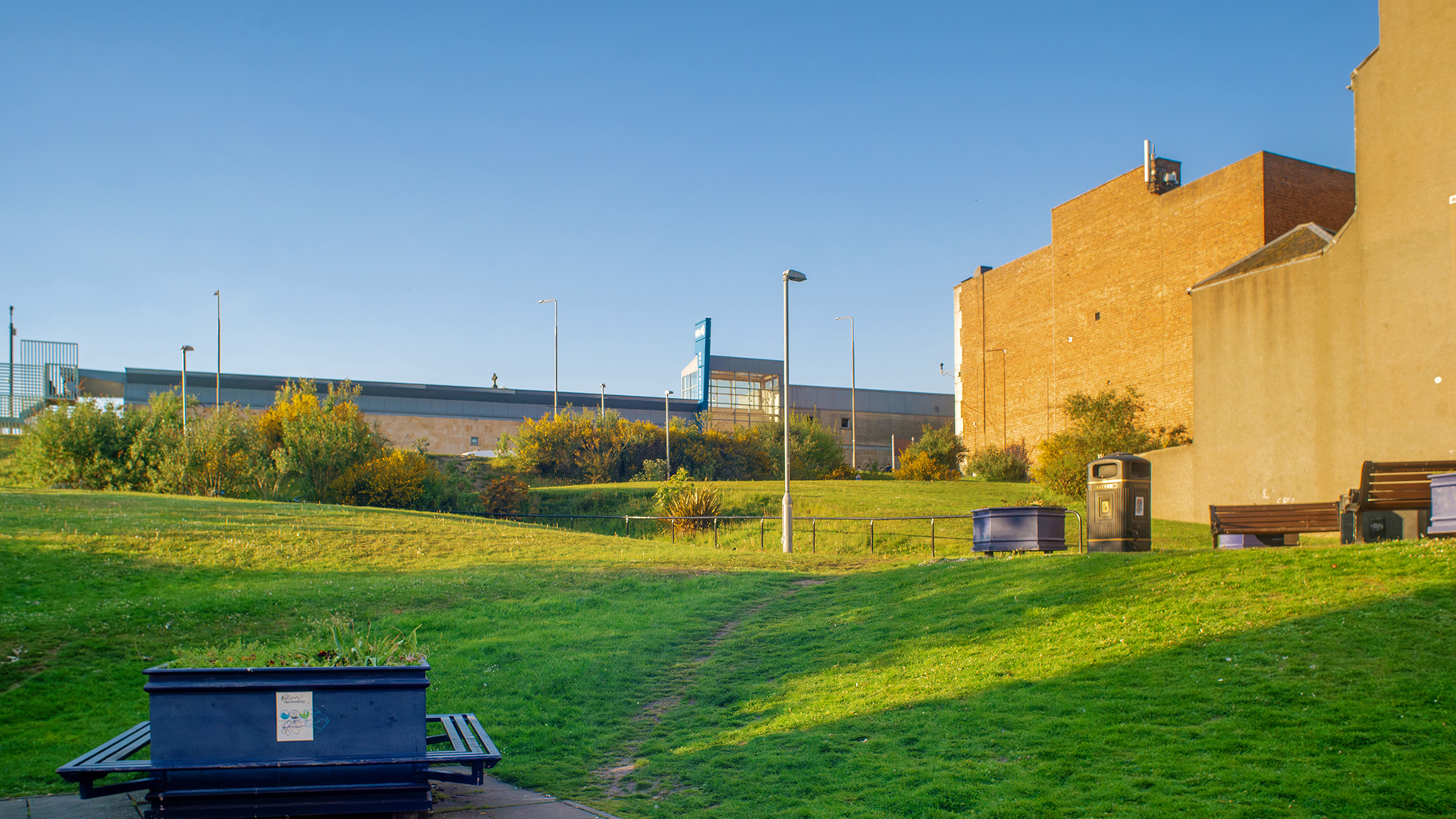A City Square Fifteen Years in the Making - But Is It What the Public Wants?
The gap site on Dunfermline’s High Street has long been a subject of debate. Vacant since the 1990s, it has been described as both an eyesore and an opportunity.
Now, with £1.65 million of public money allocated, the square is finally moving forward. But does it have the support of the people it is meant to serve? We break down the results of our public survey.
Awareness
We asked the community if they were aware of the plans to develop the a city sqaure on the old Co-op gap-site.
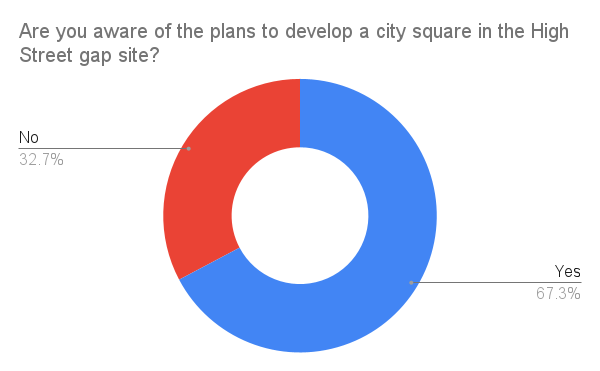
Most respondents were aware of the city square plans, suggesting that information had spread widely through local media and word of mouth.
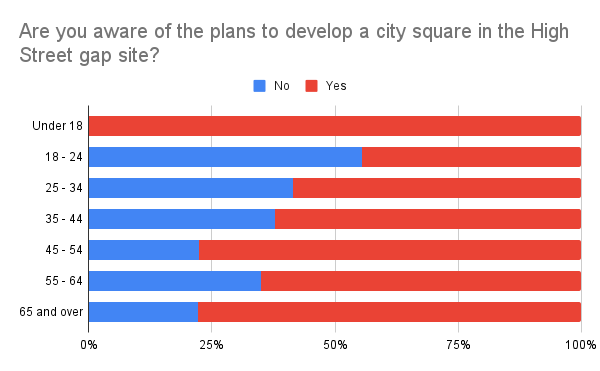
Awareness was highest among older age groups, while younger respondents (under 30) were less likely to know about the project.
Support
We were interested to know if the community and local businesses were supportive of the £1.6M development.
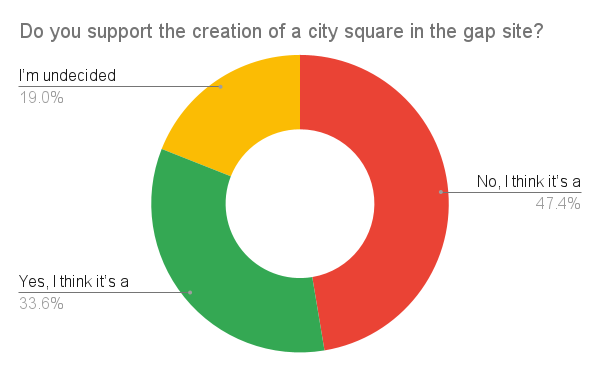
Opinion was split, with almost half of respondents believing it was a missed opportunity, over a third thought the development was a good idea, with the remainder undecided. This underlines how divisive the proposal remains.
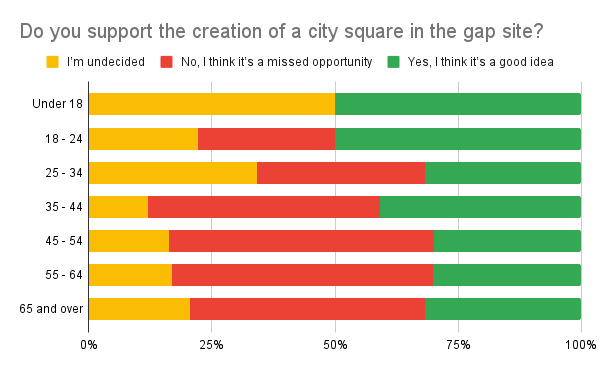
Younger respondents showed slightly more support, seeing it as a potential place for activity, while older groups were more sceptical about value for money.
Supporters were asked about potential benefits, and those who opposed the development were asked to highlighted drawbacks and concerns.
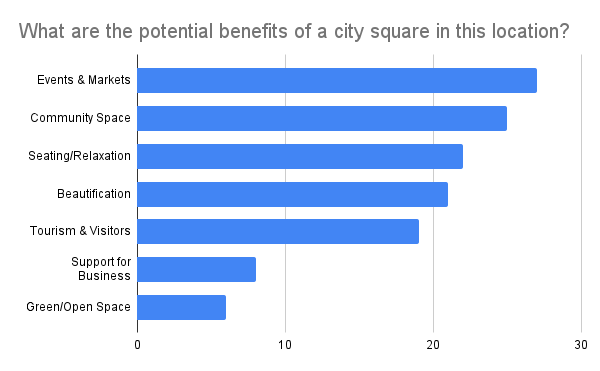
People saw potential in the square as a place for events and markets, a community hub to meet and relax, and a way to brighten up the High Street. Some also felt it could boost tourism and local pride, showing that many do see opportunities if the space is well used.
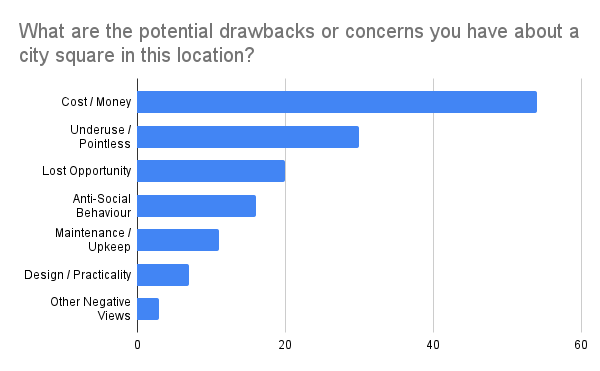
The biggest concern was cost, with many questioning whether the square offers value for money. Others feared it would be underused, a missed opportunity for more ambitious development, or vulnerable to anti-social behaviour and poor upkeep - leaving the risk of it becoming an expensive disappointment.
Perceived Impact
Respondents were asked what impact a city square might have on the High Street.
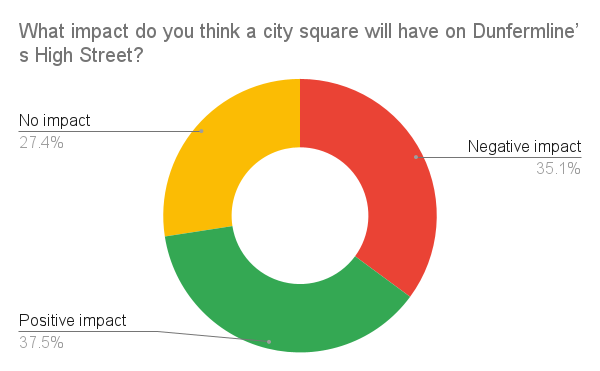
Respondents were divided between those who believe it could have a positive impact, those who think it will make little difference, and those who fear it could be negative.
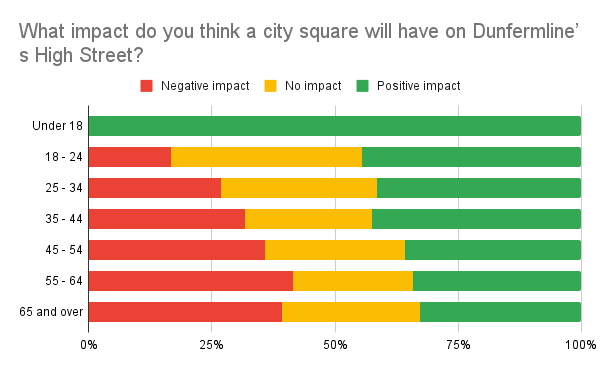
Optimism was higher among younger age groups, while older respondents were more likely to see the impact as negligible.
Consultation Concerns
A key finding was the perception of poor consultation.
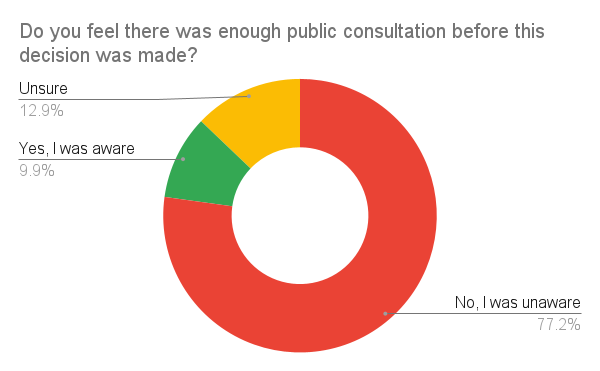
A clear majority felt there had not been enough consultation, reflecting a sense that the project is being delivered to the public, not with them.
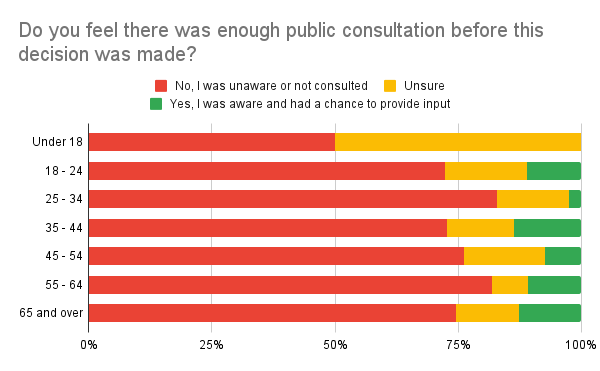
Across all age groups, the view was consistent: consultation was lacking.
How People Use the Space Now
Understanding how often people currently visit the site is crucial.
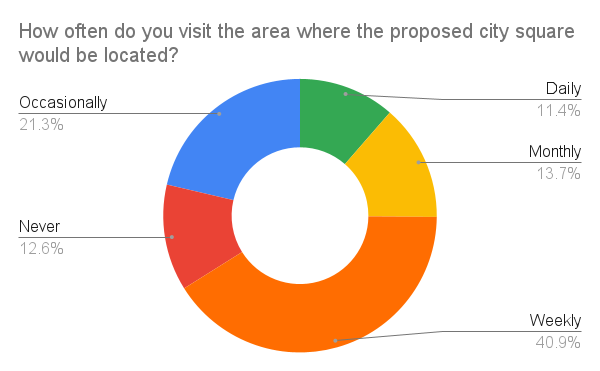
Most respondents reported visiting the site occasionally rather than regularly, which suggests limited footfall at present.
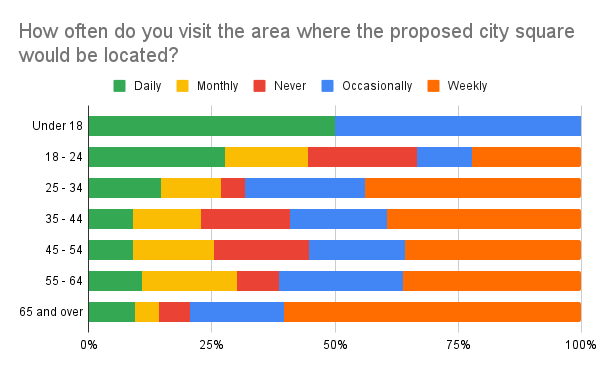
Younger respondents were less likely to visit, while older groups tended to pass through more often.
Town Centre Housing
Another theme was whether housing should play a bigger role in supporting the High Street.
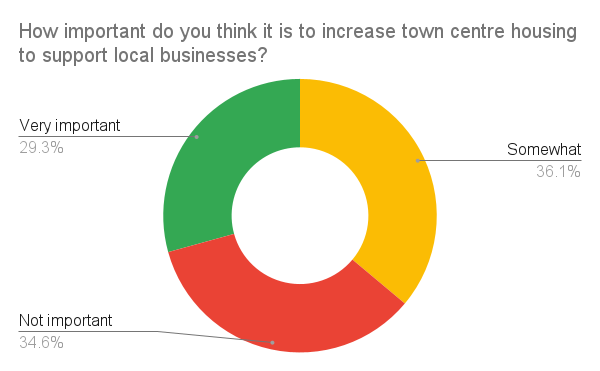
A majority agreed it is important, recognising the link between a resident population and local business vitality.
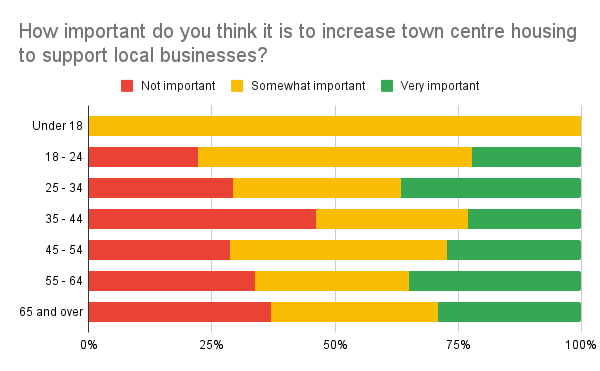
Support for housing was strongest among younger respondents, who see it as part of revitalisation. Older respondents were more divided.
Alternatives to a City Square
When asked what else they would like to see developed, respondents provided a variety of alternatives.
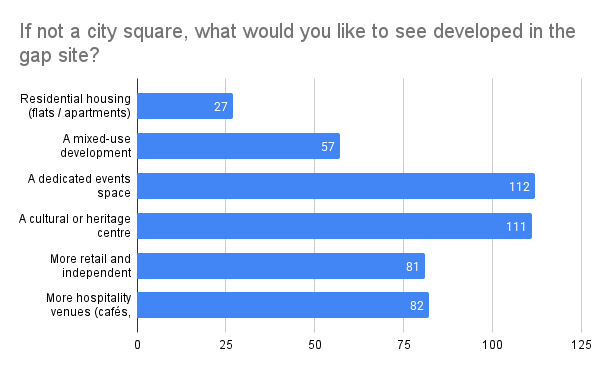
Alternatives included cultural/heritage spaces, food markets, independent shops, green space, or leaving it undeveloped.
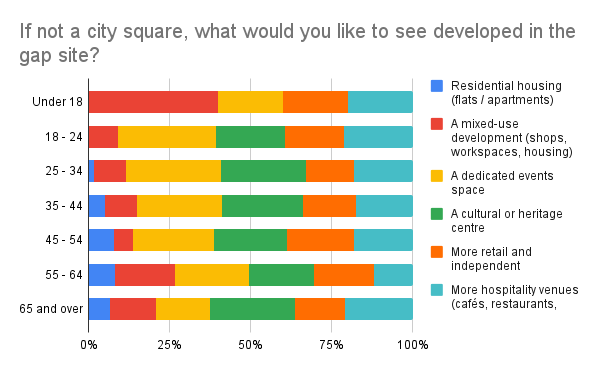
Younger respondents leaned towards food, entertainment, and cultural uses, while older groups favoured heritage or leaving the site alone.
As well as the predefined choices, respondents could select 'other' to suggest their own ideas as to how the gap-site could be developed. Out of the 67 open text responses, we categorised those into clear themes.
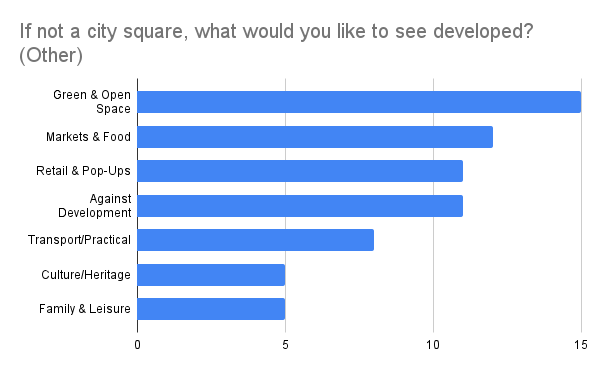
Responses showed a wide range of alternative ideas, with many calling for a cultural or heritage space, a food court or market hall, or independent shops and mixed-use development combining business and housing. Others suggested creating more green space in the town centre, while a smaller group felt the site should simply be left alone or money spent elsewhere. Overall, the results highlight that many people see the gap site as a chance for something more ambitious than a small square.
Preferences for Development
When forced to choose between different development options:
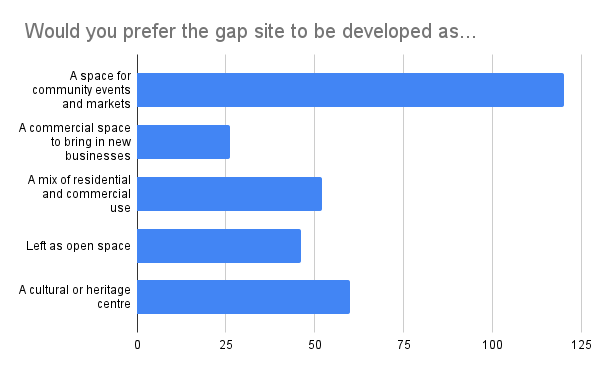
Responses were split between different options, with many favouring something other than a square, including mixed-use development.
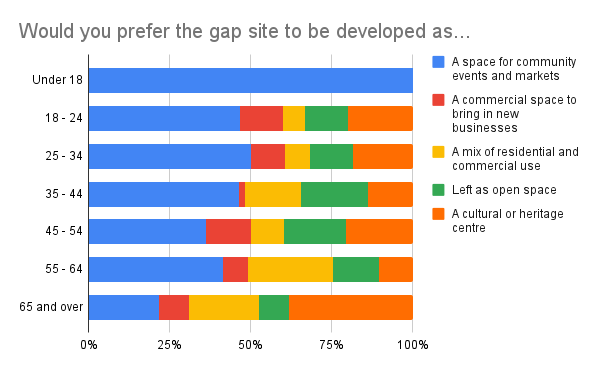
Younger groups favoured food and culture-led uses, while older groups were more likely to support green space or housing.
Other Suggestions
Alongside the main options, a small number of respondents put forward alternative ideas. These included proposals for a children’s play park, a performance or live event space, and affordable work units for small businesses. While less common, these responses show the variety of ways people imagine the site could contribute to the town centre beyond the standard choices offered.
Broader Issues Facing the High Street
The gap site debate is part of a wider conversation about the future of the High Street.
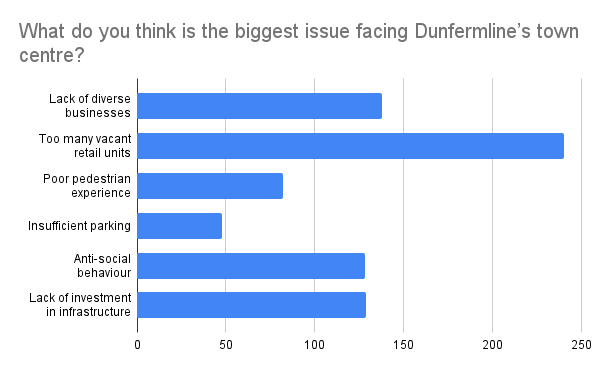
The most frequently cited issues were empty shops, lack of variety, parking, and anti-social behaviour.
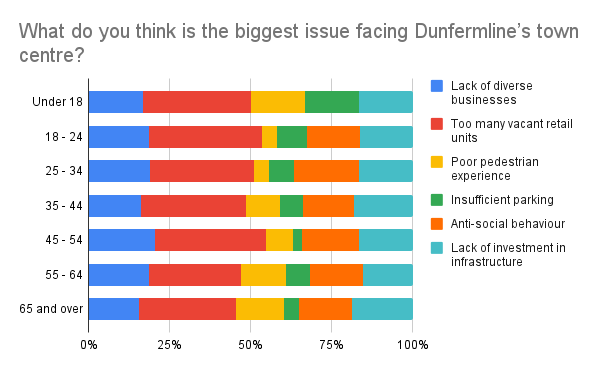
Younger people emphasised entertainment and vibrancy, while older groups focused on vacancies and accessibility.
Other Issues Raised
In addition to the main concerns such as empty shops, lack of variety, parking, and safety, a smaller number of people highlighted other issues. These included the need for better public transport, calls for more green space and cleaner streets, and worries about the quality of new developments. Though less common, these comments reflect the breadth of challenges people feel are holding the town centre back.
What Would Bring People Back?
Respondents also highlighted what would encourage them to visit the High Street more often.
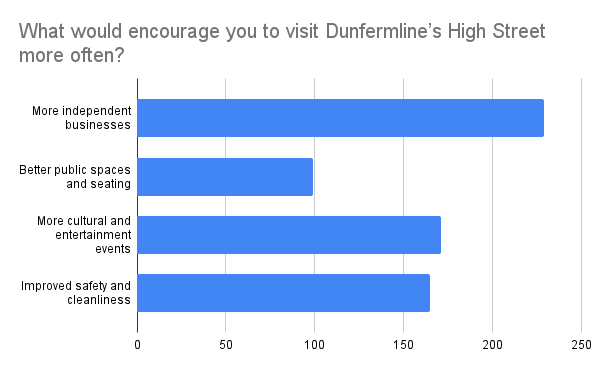
Respondents wanted more independent shops, better safety and cleanliness, improved public spaces, and cultural events.
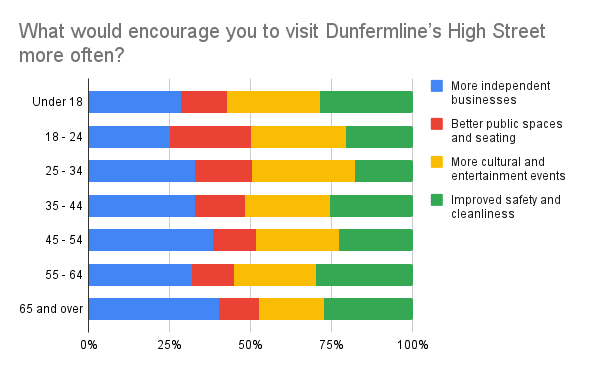
Younger people were attracted by food, culture, and events; older people emphasised safety, parking, and cleanliness.
In addition to the predefined choices, respondents had the option to suggest 'other' reasons that would encourage visitors to the high street.
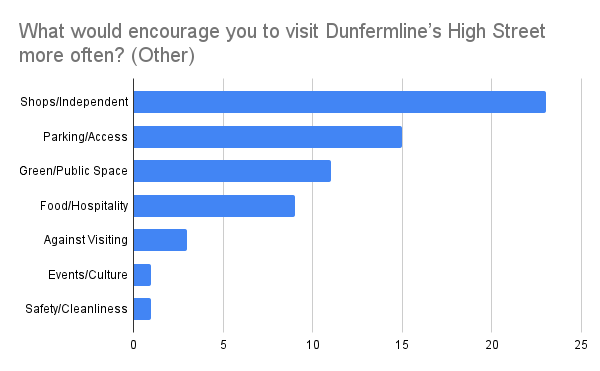
The open-text “other” responses have been grouped into themes. While fewer in number, they still point to practical improvements that people feel would make a difference. Suggestions included more family-friendly spaces, better public seating and toilets, improved accessibility for those with mobility needs, and more evening activities to keep the High Street lively after dark.
Have Your Say
Our survey is still open, and we want to hear from as many people as possible about the future of Dunfermline’s High Street.
Whether you support the city square, oppose it, or have an entirely different idea, your views will help shape how this project is understood.
